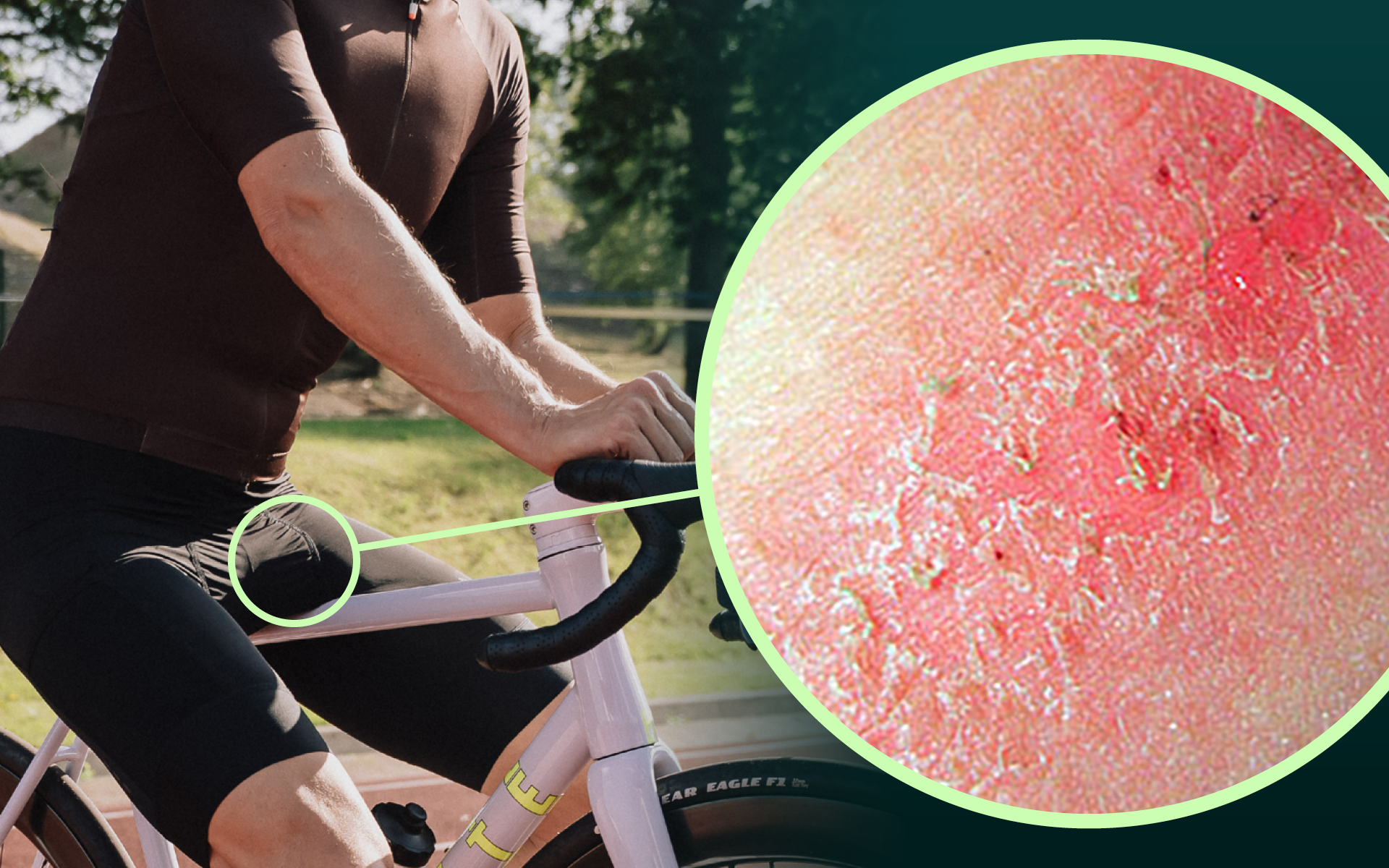Posedla Academy | Chafing and skin abrasions in cycling

Cycling should be smooth—your skin shouldn't suffer from constant friction and irritation. Chafing and skin abrasions are common issues, especially on long rides, but they don’t have to be part of your cycling experience. The right setup, gear, and habits can keep your skin protected and comfortable.
1 | What Are Chafing and Skin Abrasions?
Chafing is skin irritation caused by repeated friction, moisture, and heat, while abrasions are more severe forms of skin damage, leading to painful raw spots. Cyclists often experience these issues in the groin, inner thigh, and buttock areas due to prolonged contact with the saddle.
2 | Common Symptoms
-
Redness and irritation in high-friction areas
-
Burning or stinging sensation after long rides
-
Raw, tender skin that worsens with movement
-
Small open sores or cracked skin
-
Increased discomfort in humid or sweaty conditions
3 | What Causes Chafing and Skin Abrasions in Cyclists?
-
Excessive friction from saddle contact – prolonged movement against the skin
-
Sweat and moisture buildup – reducing skin’s natural protection
-
Ill-fitting cycling shorts – seams, fabric, or improper fit increasing irritation
-
Poor saddle choice – excessive pressure in sensitive areas
-
Lack of skin protection – no chamois cream or skin barriers
4 | Diagnosis: How to Identify the Issue?
-
Self-examination – checking for red, raw, or irritated areas post-ride
-
Symptom tracking – monitoring if discomfort increases on longer or hotter rides
-
Medical consultation – if skin damage becomes infected or does not heal properly
5 | How to Prevent and Treat Chafing?
-
Proper saddle fit – reducing unnecessary friction
-
High-quality cycling shorts – breathable, seamless, and well-padded
-
Chamois cream – minimizing skin friction and irritation
-
Post-ride hygiene – showering and changing immediately after riding
-
Allowing the skin to recover – taking breaks and using healing creams if needed

Expert Sources:
Leibovitch, I., & Mor, Y. (2005). The Vicious Cycling: Bicycling Related Urogenital Disorders. European Urology, 47(3), 277–287. https://doi.org/10.1016/j.eururo.2004.10.024
Bressel, E., Reeve, T., Parker, D., & Cronin, J. (2007). Influence of bicycle seat pressure on compression of the perineum: A MRI analysis. Journal of Biomechanics, 40(1), 198–202. https://doi.org/10.1016/j.jbiomech.2005.11.017
Your ride should challenge your legs, not your skin. If chafing and abrasions are interfering with your comfort, it’s time to adjust your gear and position for a smoother ride.